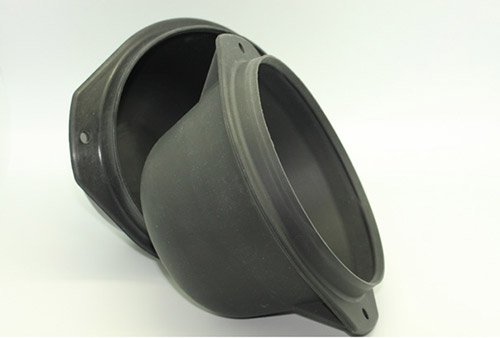
Understanding the Rubber Molding Process
At Clark Rubber and Plastic, our rubber products go through a specific process to make sure they are dependable and durable. We want our customers to understand how the rubber molding process works and where you can use them. Here are some methods of how rubber molding is created:
Molding Basics
Molding is a versatile manufacturing technique that precisely creates complex rubber and plastic parts for various industries. The process often involves molding raw rubber or plastic materials into a desired form or shape. This mold, usually made of metal, defines the final product’s characteristics and purpose.
Rubber Molding Processes
Several rubber molding processes are designed for specific applications and production requirements. Compression molding, injection molding, and transfer molding are some common techniques. Compression molding involves placing raw material into an open mold. Injection molding inserts molten material into a closed mold, and transfer molding combines elements of both.
Material Selection and Preparation
Choosing the right material is beneficial in the molding process, and various elastomers and plastics are available. Each type offers different properties, such as flexibility, durability, and heat resistance. Before molding begins, the chosen material is prepared, often in the form of pellets or sheets, and then fed into the molding machine.
Molding Machine and Process
Molding machines can consist of a heated barrel, where the raw material is melted and placed into a mold where the material is injected or compressed. The machine applies pressure and heat to shape the material according to the mold’s specifications. This helps make sure the final product is consistent and uniform.
Precision in Molding of Rubber
Precision is significant in this type of molding, especially when manufacturing parts for industries with specific quality standards like automotive and solar. Consistent dimensions, material distribution, and surface finish are key for the functionality and longevity of the end product. Advanced molding technologies and quality control measures are used to achieve and maintain this precision.
Quality Control and Inspection
After the parts are molded, they undergo a thorough inspection to make sure they meet our specified standards. This may involve dimensional checks, visual inspections, and material property testing. By implementing quality control measures, we manufacturers can increase the reliability and performance of the rubber and plastic components.
Applications Across Industries
Rubber molding can be found in applications across diverse industries. You can find it contributing to the production of components used in solar panels, automotive systems, household appliances, and more. The versatility of the process allows for the creation of complex designs and custom solutions tailored to the unique requirements of each industry.
Rubber Molding with Clark Rubber and Plastic
At Clark Rubber and Plastic, we offer various rubber molding products and continue to include new technologies. We can provide natural rubber, Neoprene, Nitrile, Viton®, EPDM, and SBR. Our team can assist you in choosing the right molding for your specific needs and projects. Contact us today to learn more about our moldings and what equipment we use to help deliver quality results to our customers.
